In an age where artificial intelligence (AI) permeates the fabric of our existence, we find ourselves surrounded by virtual assistants like Siri and Alexa, as well as advanced surveillance systems that monitor our every move. These AI-powered devices are increasingly becoming part of the landscape of our daily lives, influencing how we interact with one another and with the world around us. Amidst this technological revolution, questions concerning the implications of AI on children’s privacy and surveillance have emerged, and these concerns demand our attention.
As we continue to embrace AI technologies, we must consider the potential consequences of their widespread use on the lives of children. Growing up in a world deeply connected through AI, children experience a reality vastly different from the one we knew just a few decades ago. From smart toys and educational platforms to social media and beyond, AI has the power to shape children’s development, relationships, and understanding of self. Therefore, it is crucial to explore the impact of these advancements on the privacy and surveillance of the youngest members of society, as their vulnerabilities and unique needs may require a different approach to ensure their well-being.
This short article delves into the various ways in which AI-powered devices influence children’s lives and the potential risks that arise as a result. We will examine the changing landscape of privacy and surveillance in the AI era, the ethical considerations involved in the deployment of AI technologies, and the role of various stakeholders in protecting children’s privacy. By doing so, we hope to provide a foundation for understanding the complexities and challenges of this evolving technological landscape and offer recommendations on how to ensure the ethical and responsible use of AI-powered devices for the benefit of future generations.

I. The Changing Landscape of Privacy and Surveillance in the AI Era
A. Overview of AI-powered Devices and Their Functions
In our ever-evolving digital landscape, AI-powered devices have proliferated, transforming the way we experience the world around us. These devices incorporate intelligent systems that can learn, adapt, and autonomously make decisions based on the data they collect. From smartphones and virtual assistants to wearable technologies and home automation systems, AI is at the heart of many modern conveniences that cater to our needs and desires.
AI-powered devices are equipped with an array of sensors and capabilities that enable them to process vast amounts of data, recognize patterns, and generate predictions. These features allow them to perform tasks with incredible efficiency and accuracy, such as natural language processing, image recognition, and data analysis. As we continue to integrate these technologies into our daily lives, the boundaries between the digital and physical worlds blur, creating new opportunities for connection and self-expression, while also raising concerns about privacy, surveillance, and the implications for children growing up in an AI-driven society.
B. The Rise of Smart Devices and the Internet of Things (IoT)
The Internet of Things (IoT) has been a driving force behind the proliferation of AI-powered devices. IoT refers to the interconnected network of physical devices, vehicles, buildings, and other objects embedded with sensors, software, and network connectivity that enables them to collect and exchange data. With the rapid expansion of the IoT, we witness an ever-growing number of smart devices entering our homes and public spaces, each with the potential to impact children’s experiences.
Smart devices, such as toys, wearables, and home automation systems, often come equipped with AI capabilities that can tailor their functionalities to the preferences and needs of individual users. These devices can track and analyze children’s behavior, learning patterns, and emotional states, providing unprecedented insight into their development and well-being. While these advancements offer the promise of enhanced learning, personalized experiences, and improved safety, they also raise important questions about the extent to which we are willing to relinquish our privacy and subject ourselves, and our children, to constant surveillance.
C. The Role of AI in Modern Surveillance Systems
Modern surveillance systems have been revolutionized by the integration of AI, enabling more sophisticated and effective monitoring of individuals and groups. AI-powered facial recognition, biometric identification, and predictive analytics are increasingly used in public spaces, educational institutions, and online platforms to track and analyze people’s behavior, movements, and social interactions. This pervasive surveillance extends to children as well, who are not immune to the watchful gaze of these intelligent systems.
As AI continues to advance, surveillance systems have become more accurate, efficient, and unobtrusive. This shift raises concerns about the potential for abuse and the erosion of privacy, as well as the normalization of surveillance in children’s lives. Growing up under the constant scrutiny of AI-powered devices may lead children to internalize a sense of being watched, which can have lasting effects on their development, relationships, and understanding of autonomy.
In the face of these challenges, it is imperative that we, as a society, critically examine the role of AI in surveillance systems and carefully consider the ethical, social, and psychological implications of these technologies on children. In the chapters that follow, we will explore the impact of AI-powered devices on children’s privacy, the ethical considerations involved in their deployment, and the responsibilities of various stakeholders in ensuring that these technologies are used in a manner that respects and preserves the rights of children.

II. Implications for Children’s Privacy
A. Data Collection and Its Impact on Children’s Privacy
- How AI-powered Devices Collect Data on Children
In today’s interconnected world, AI-powered devices are constantly collecting and processing data on children. Smart toys, educational platforms, social media applications, and even wearable devices gather a wide range of information, such as children’s biographical details, location, online activities, communication patterns, and even biometric data. These devices employ various sensors, cameras, and microphones, which allow them to capture and analyze children’s behavior, emotions, and interactions.
This constant data collection raises concerns about children’s privacy rights, as they may not fully understand the extent to which their personal information is being captured, stored, and potentially shared. Furthermore, the unique developmental needs and vulnerabilities of children necessitate a heightened level of privacy protection. As they navigate their formative years, children require the freedom to explore, experiment, and make mistakes without the fear of constant surveillance or judgment.
- The Risks Associated with Data Breaches and Unauthorized Access
The vast amounts of data collected by AI-powered devices are often stored in centralized databases, which can be vulnerable to data breaches and unauthorized access. Hackers and other malicious actors may exploit these vulnerabilities, potentially gaining access to sensitive information about children and their families. In some cases, this data may be used for criminal activities, such as identity theft or extortion.
Moreover, even in the absence of overt security breaches, unauthorized access to children’s data can still occur through the sharing or selling of information by companies to third parties, often without the explicit consent or knowledge of the child or their parents. This can result in children’s data being used in ways that infringe upon their privacy rights or expose them to risks they are unequipped to handle.
B. The Consequences of Data Profiling and Targeted Advertising
- The Erosion of Privacy through Targeted Ads and Content
As AI-powered devices gather and process data on children, the information is often used to create detailed profiles that inform targeted advertising efforts. Advertisers utilize this data to deliver personalized ads and content, which can be highly effective in capturing children’s attention and influencing their behavior. However, this practice raises significant ethical concerns, as it erodes children’s privacy and exposes them to commercial influences at an early age.
Targeted advertising is especially concerning when it comes to children, as they are more susceptible to manipulation and may not possess the cognitive skills necessary to critically evaluate the messages they encounter. Furthermore, the constant barrage of personalized ads can contribute to a culture of consumerism, potentially shaping children’s values and priorities in ways that prioritize materialism over meaningful connections and experiences.
- The Long-term Psychological Effects of Constant Surveillance and Data Mining
The constant surveillance and data mining facilitated by AI-powered devices can have long-term psychological effects on children. As children become aware that their every move is being monitored and analyzed, they may begin to feel a loss of autonomy and develop a heightened sense of self-consciousness. This can lead to a range of negative outcomes, such as increased anxiety, reduced self-esteem, and inhibited creativity.
Moreover, growing up under the watchful eye of AI-powered devices may impact children’s ability to form authentic relationships, as they learn to present a curated version of themselves that conforms to the expectations of the algorithms and the entities that control them. This can result in a diminished capacity for empathy, emotional intelligence, and genuine connection, as children become more focused on maintaining their carefully constructed online personas.
C. The Potential for AI-powered Devices to be Used for Surveillance and Control
- The Potential Misuse of AI in Monitoring Children’s Online and Offline Activities
As AI-powered devices become more sophisticated and pervasive, there is a growing potential for these technologies
to be misused in monitoring children’s online and offline activities. Beyond the commercial applications of targeted advertising, AI-powered surveillance systems can be employed by various actors, such as educational institutions, law enforcement agencies, or even parents, to track and scrutinize children’s behavior.
In educational settings, AI-powered surveillance tools can be used to monitor students’ performance, social interactions, and emotional states, potentially resulting in an environment where children feel pressured to conform to the expectations of the system. This can lead to a culture of surveillance that stifles creativity, critical thinking, and individuality.
Similarly, overzealous parents may use AI-powered devices to track their children’s movements, online activities, and social connections, in the name of safety and well-being. While these concerns may be well-intentioned, the overuse of surveillance tools can undermine children’s sense of autonomy, trust, and self-confidence, ultimately hindering their personal growth and development.
- The Risks of AI being Used to Track Children’s Locations and Movements
The increasing prevalence of AI-powered devices, such as smartphones, wearables, and IoT-enabled objects, has made it easier than ever to track children’s locations and movements. While location tracking can have legitimate safety applications, it also raises concerns about privacy and the potential for abuse.
For instance, the unauthorized access to location data can expose children to risks, such as stalking, harassment, or even kidnapping. Additionally, the constant monitoring of children’s movements may lead to a “chilling effect” on their behavior, as they become increasingly self-conscious and reluctant to engage in activities that might be perceived as deviating from the norm.
In summary, the implications of AI-powered devices for children’s privacy are vast and multifaceted. The risks associated with data collection, targeted advertising, and surveillance can have significant consequences for children’s psychological well-being, autonomy, and personal growth. As we continue to explore the ethical and responsible use of AI technologies, it is crucial to consider the unique vulnerabilities of children and prioritize their privacy rights in the development and deployment of these devices. In the following chapters, we will discuss the ethical considerations of AI technologies and the roles and responsibilities of various stakeholders in ensuring that AI-powered devices are used in ways that respect and protect children’s rights and well-being.

III. Ethical Considerations in the Deployment of AI Technologies
A. The Need for Transparency and Accountability in AI Development
- The Importance of Understanding How AI Algorithms Make Decisions
As AI-powered devices continue to proliferate and influence various aspects of children’s lives, it is imperative that we understand how these technologies make decisions and process information. AI algorithms, particularly those that rely on deep learning and neural networks, can be opaque and difficult to interpret, leading to concerns about their fairness, bias, and potential unintended consequences.
In order to ensure that AI technologies are ethically and responsibly deployed, developers and tech companies must prioritize transparency in the design and functioning of their algorithms. By making the decision-making processes of AI systems more understandable, we can identify and address potential biases or harmful effects, ultimately fostering greater trust and confidence in these technologies.
- The Role of Developers and Tech Companies in Ensuring Ethical AI Usage
Developers and tech companies play a crucial role in ensuring the ethical use of AI technologies, particularly as they relate to children’s privacy and well-being. These entities must assume responsibility for the potential impacts of their products and services, actively working to minimize risks and maximize benefits.
To achieve this, developers and tech companies should adopt a set of guiding principles that prioritize the ethical use of AI, such as fairness, accountability, transparency, and privacy. By committing to these values, they can establish a strong foundation for the responsible development and deployment of AI-powered devices that respect and protect children’s rights.
B. The Rights of Children in the Digital Age
- The Need to Recognize and Protect Children’s Digital Rights
As digital natives, children growing up in the AI era have unique needs and vulnerabilities that must be recognized and addressed. This includes the acknowledgment and protection of their digital rights, such as the right to privacy, freedom of expression, and access to information.
Children’s digital rights are an extension of their fundamental human rights and must be safeguarded with the same level of care and consideration. This means ensuring that AI-powered devices and systems are designed and deployed in ways that prioritize children’s best interests, while also providing them with the tools and resources necessary to navigate the digital landscape safely and responsibly.
- The Importance of Privacy by Design and Privacy-Enhancing Technologies
One of the key strategies for protecting children’s digital rights is the adoption of privacy by design principles and the development of privacy-enhancing technologies. Privacy by design refers to the proactive integration of privacy considerations into the development and operation of AI technologies, ensuring that privacy is a core component of their functionality.
Privacy-enhancing technologies, on the other hand, are tools and methods designed to protect personal information while still allowing for the collection and processing of data. These technologies can help minimize the amount of personal information that is collected, stored, and shared, ultimately reducing the risks associated with data breaches and unauthorized access.
By embracing privacy by design principles and investing in privacy-enhancing technologies, developers, tech companies, and other stakeholders can play a significant role in safeguarding children’s digital rights and promoting a more ethical and responsible use of AI technologies.
C. The Role of Government and Regulation in Protecting Children’s Privacy
- The Need for Updated Privacy Laws that Address the Unique Challenges of AI
As AI technologies continue to evolve and transform the digital landscape, there is a pressing need for updated privacy laws and regulations that address the unique challenges and risks associated with these innovations. Existing privacy frameworks may not adequately account for the complexities of AI-powered devices and systems, particularly as they relate to children’s privacy and surveillance.
Governments must take action to revise and modernize their privacy laws, ensuring that they provide robust protections for children in the digital age. This may involve the establishment of new legal frameworks that specifically address AI technologies, or the modification of
existing laws to incorporate provisions that account for the unique characteristics and potential risks of AI. In either case, it is essential that these updated regulations prioritize children’s best interests and provide clear guidelines for developers, tech companies, and other stakeholders on how to ethically and responsibly deploy AI-powered devices.
- The Role of Data Protection Agencies in Enforcing Privacy Regulations
In addition to updating privacy laws, governments must also ensure that these regulations are effectively enforced. Data protection agencies play a critical role in this process, as they are responsible for monitoring compliance with privacy laws and taking action against entities that violate these regulations.
To ensure that children’s privacy rights are adequately protected in the AI era, data protection agencies must be well-equipped and empowered to respond to the unique challenges and complexities of AI technologies. This may involve providing additional resources and training to these agencies, as well as fostering greater collaboration between government bodies, developers, tech companies, and other stakeholders.
By working together, data protection agencies and other actors can develop a more comprehensive understanding of the potential risks and benefits associated with AI-powered devices, ultimately enabling them to make more informed decisions about how to protect children’s privacy and well-being in the digital age.
The ethical deployment of AI technologies is a multifaceted challenge that requires the collaboration and commitment of various stakeholders, including developers, tech companies, governments, and data protection agencies. By prioritizing transparency, accountability, and the protection of children’s digital rights, we can work towards ensuring that AI-powered devices are used in ways that respect and safeguard children’s privacy and well-being. As we continue to navigate the rapidly evolving AI landscape, it is essential that we remain vigilant and proactive in our efforts to promote the responsible and ethical use of these transformative technologies.

IV. Recommendations for Ensuring Ethical and Responsible Use of AI-Powered Devices
A. Empowering Children with Digital Literacy and Education
- The Importance of Teaching Children About Online Privacy and Safety
As AI-powered devices become more integrated into children’s lives, it is crucial that they develop the necessary skills and knowledge to navigate the digital landscape safely and responsibly. This includes teaching children about online privacy and safety, such as understanding the importance of protecting personal information, recognizing the potential risks associated with oversharing, and knowing how to identify and report inappropriate or harmful content.
Digital literacy education should begin at an early age and continue throughout children’s development, as they become more adept at using technology and engaging with online platforms. By equipping children with the tools and resources needed to make informed decisions about their online behavior, we can empower them to take control of their digital lives and protect their privacy rights.
- The Role of Parents, Educators, and Caregivers in Promoting Digital Literacy
Parents, educators, and caregivers play a vital role in promoting digital literacy among children, as they are often the primary sources of guidance and support in children’s lives. In order to effectively teach children about online privacy and safety, these individuals must also be well-informed and comfortable with digital technologies.
This may involve participating in digital literacy training programs or workshops, staying up-to-date with the latest developments in AI and related technologies, and maintaining an open dialogue with children about their online experiences. By fostering a culture of digital literacy and awareness, parents, educators, and caregivers can help create a safer and more responsible digital environment for children.
B. Encouraging the Development and Adoption of Privacy-Enhancing Technologies
- The Potential Benefits of Decentralized AI and Federated Learning
One approach to mitigating the privacy risks associated with AI-powered devices is to encourage the development and adoption of privacy-enhancing technologies, such as decentralized AI and federated learning. Decentralized AI refers to the distribution of AI processing across multiple devices or nodes, rather than relying on a centralized server. This can help reduce the potential for data breaches and unauthorized access by limiting the amount of personal information stored in a single location.
Federated learning, on the other hand, involves training AI algorithms on decentralized data sets, allowing individual devices to learn and update their models without the need to share raw data. This can help protect user privacy by ensuring that personal information remains on the individual’s device, rather than being transmitted to a centralized server.
By investing in and adopting these privacy-enhancing technologies, tech companies can create AI-powered devices that better protect children’s privacy while still delivering the benefits and conveniences associated with AI.
- The Role of Tech Companies in Creating Privacy-Conscious AI Devices
Tech companies play a crucial role in the development and adoption of privacy-enhancing technologies. By prioritizing privacy in the design and operation of AI-powered devices, these companies can demonstrate a commitment to ethical and responsible AI usage.
This may involve conducting privacy impact assessments during the development process, engaging with privacy experts and advocates to identify potential risks and mitigation strategies, and actively promoting privacy-enhancing technologies within the industry. By leading the way in privacy-conscious AI development, tech companies can help establish a higher standard for the ethical and responsible deployment of these technologies.
C. Advocating for More Robust Regulation and Oversight of AI Technologies
- The Need for International Cooperation in Setting AI Standards and Regulations
As AI technologies continue to evolve and proliferate across borders, there is a growing need for international cooperation in setting standards and regulations that protect children’s privacy and well-being. By working together, governments, international organizations, and other stakeholders can develop a more comprehensive and consistent approach to AI regulation, ensuring that children’s rights are respected and protected regardless of where they live or what technologies they use.
This may involve creating international frameworks and guidelines for AI development and deployment, sharing best practices and lessons learned, and establishing mechanisms for cross-border cooperation and enforcement. By promoting international collaboration, we can create a global environment that prioritizes the ethical and responsible use of AI technologies for the benefit of all children.
- The Importance of Involving Children and Their Advocates in the Policymaking Process
In order to ensure that AI regulations and standards are truly aligned with the best interests of children, it is essential to involve children and their advocates in the policymaking process. This includes soliciting input and feedback from children themselves, as well as engaging with experts in child development, education, and digital rights.
By involving children and their advocates in the decision-making process, we can gain a deeper understanding of the unique needs and vulnerabilities of children in the digital age, ultimately resulting in more effective and targeted policies and regulations. Furthermore, this inclusive approach can help foster a sense of ownership and empowerment among children, as they see their voices and concerns being taken into account in shaping the digital landscape.
Ensuring the ethical and responsible use of AI-powered devices in the context of children’s privacy and well-being requires a multifaceted approach that involves education, technological innovation, and robust regulation. By empowering children with digital literacy skills, encouraging the development and adoption of privacy-enhancing technologies, and advocating for more comprehensive and consistent AI regulations, we can work towards creating a safer and more responsible digital environment for children. As we continue to navigate the rapidly evolving AI landscape, it is essential that we remain committed to protecting the rights and interests of children, and fostering a culture of ethical and responsible AI usage that benefits all members of society.

Final considerations
In conclusion, as AI-powered devices continue to permeate our daily lives, we must remain vigilant in recognizing and addressing the potential consequences of these technologies on children’s privacy and surveillance. The rapid advancements in AI present both opportunities and challenges, and it is our collective responsibility to ensure that these innovations serve the best interests of our children and future generations.
By fostering a culture of transparency and accountability in AI development, we can encourage the creation of technologies that prioritize ethical considerations and are cognizant of the unique needs and vulnerabilities of children. This involves working closely with developers, tech companies, and policymakers to establish guidelines and standards that promote responsible AI usage.
Education also plays a crucial role in this endeavor. By promoting digital literacy among children, parents, educators, and caregivers, we empower individuals with the knowledge and skills needed to navigate the digital landscape safely and responsibly. This includes teaching children about online privacy, safety, and the potential implications of AI technologies on their lives, as well as providing guidance and support to the adults in their lives.
Moreover, we must advocate for stronger regulations and oversight of AI technologies, both domestically and internationally. This involves updating privacy laws to reflect the unique challenges posed by AI, as well as fostering international cooperation to establish consistent standards and guidelines. In doing so, we can create a more cohesive and effective regulatory environment that safeguards children’s privacy and well-being across borders.
Finally, it is essential to involve children and their advocates in the decision-making process. By incorporating their perspectives and concerns, we can develop more targeted and effective policies, regulations, and technologies that truly reflect the needs and interests of children in the digital age.
In pursuit of a future where AI technology is used ethically and responsibly, we must remain committed to safeguarding the well-being and rights of children. Through a combination of transparency, education, robust regulation, and stakeholder engagement, we can work together to ensure that the advancements in AI technologies serve to enrich and protect the lives of children, rather than undermining their privacy and autonomy. As we continue to navigate the rapidly evolving AI landscape, let us maintain our focus on the best interests of our children, ensuring that the digital age remains a time of opportunity, growth, and empowerment for all.



